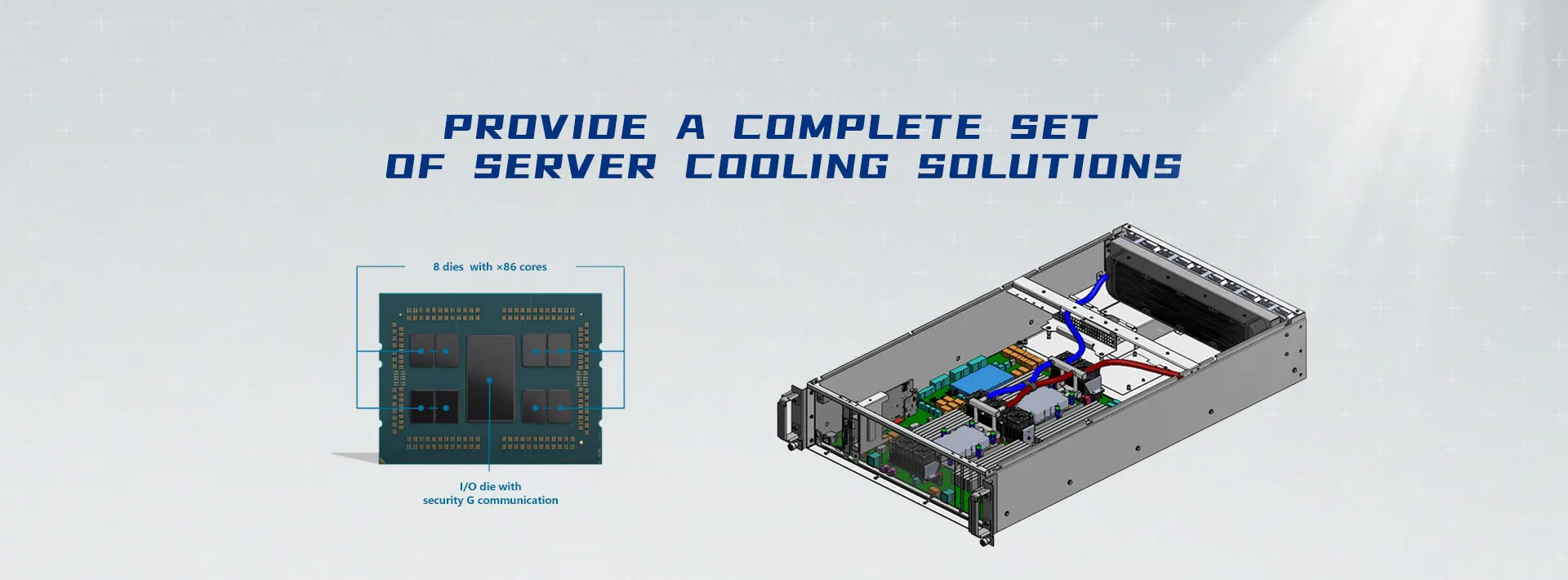VC soaking plate
The soaking plate is a vacuum chamber with a fine structure on the inner wall, usually made of copper. When the heat is transferred from the heat source to the evaporation zone, the cooling liquid in the cavity begins to vaporize after being heated in a low vacuum environment. At this time, it absorbs heat energy and expands rapidly, and the cooling medium in the gas phase quickly fills the whole In the cavity, when the gas phase working fluid comes into contact with a relatively cold area, it will condense. Through the phenomenon of condensation, the heat accumulated during evaporation is released, and the condensed cooling liquid will return to the evaporation heat source through the capillary channel of the microstructure, and this operation will be repeated in the cavity.
Structure and specifications
The soaking plate is a flat plate-like shape in appearance, and the upper and lower covers are close to each other, and the copper pillars are supported in it. The upper and lower copper sheets on the soaking plate are made of oxygen-free copper, usually pure water as the working fluid, and the capillary structure is made by copper powder sintering or copper mesh. As long as the soaking plate maintains its flat characteristics, the shape of the outer shape depends on the application of the heat dissipation module environment, and there is no restriction on the angle of placement when used. In actual application, the temperature difference measured at any two points on the plate can be less than 10°C, which is more even than the heat conduction effect of the heat pipe to the heat source, and the name of the soaking plate is therefore derived. The thermal resistance of the common soaking plate is 0.25℃/W, and it is applied to 0℃~100℃.
Principle of operation
The working principle of the soaking plate is the same as that of the heat pipe, including the four main steps of conduction, evaporation, convection, and solidification.
The soaking plate is a two-phase fluid device formed by pouring pure water into a container full of microstructures. Heat enters the plate through heat conduction from the external high temperature area, and the water around the point heat source will quickly absorb the heat and vaporize into steam, taking away a large amount of heat energy. Reusing the latent heat of water vapor, when the vapor in the plate diffuses from the high pressure area to the low pressure area (ie, low temperature area), when the vapor touches the lower temperature inner wall, the water vapor will quickly condense into a liquid and release heat energy. The condensed water flows back to the heat source by the capillary action of the microstructure, completing a heat transfer cycle, forming a two-phase circulation system in which water and steam coexist. The vaporization of the water in the soaking plate continues, and the pressure in the cavity will maintain a balance as the temperature changes. Water has a lower thermal conductivity value when it is operated at low temperatures, but because the viscosity of water changes with temperature, the soaking plate can also operate at 5°C or 10°C. Since the liquid return is effected by capillary force, the soaking plate is less affected by gravity, and the application system design space can be used at any angle. The soaking plate does not require power supply or any moving components, it is a completely sealed passive device.
Composite microstructure
Different from the heat pipe, the soaking plate product is first vacuumed and then injected with pure water to fill all the microstructures. The filling medium does not use methanol, alcohol, acetone, etc., but uses degassed pure water, there will be no environmental protection problems, and the efficiency and durability of the soaking plate can be improved. There are two main types of microstructures in the soaking plate: powder sintering and multilayer copper mesh, both of which have the same effect. However, the powder quality and sintering quality of the powder sintered microstructure are not easy to control, and the multi-layer copper mesh microstructure is applied to the copper sheet and copper mesh on the top and bottom of the soaking plate by diffusion bonding, and its pore size consistency and controllability are better than powder sintering The microstructure, the quality is relatively stable. The higher consistency can make the liquid flow more smoothly, which can greatly reduce the thickness of the microstructure and reduce the thickness of the soaking plate. The industry already has a plate thickness of 3.00mm at a heat transfer capacity of 150W. The soaking plate with copper powder sintered microstructure is not easy to control, so the overall heat dissipation module usually needs to be supplemented by the design of heat pipes. The bonding strength of the diffusion-bonded multilayer copper mesh is the same as that of the base material. Because of the high airtightness, no solder is needed, and there will be no microstructure blockage during the bonding process. Better quality and longer durability. After the diffusion bonding method is used, if the hole leaks, it can also be repaired by heavy work. In addition to joining the multilayer copper mesh by diffusion, the hierarchical design of joining a copper mesh with a smaller aperture near the heat source also enables rapid replenishment of pure water in the evaporation zone and smoother circulation of the overall heating plate. More advanced people make the micro-structure modularization as a regional design, which can be applied to the heat dissipation design of multiple heat sources. Therefore, the soaking plate designed with diffusion bonding and regionalized hierarchical design greatly increases the heat flux per unit area, and the heat transfer effect is better than that of the sintered microstructured soaking plate.
The combination of soaking plate, solid die casting and heat pipe is basically the same in principle and theoretical framework. The differences are: dimensions, manufacturing methods, vacuuming and water injection procedures, etc. Practically, the soaking plate has the advantages of low extended thermal resistance, uniform heat flux, rapid heat diffusion, and light weight.
Dongguan Juyun Hardware Technology Co., Ltd.
International sales: sales_eu@coolleo.com
Shanghai Branch: 137-8895-5637 (Mr. Huang)
Beijing Branch: 135-5201-4282 (Mr. Huang)
Chengdu Branch:136-9907-0817 (Mr. He)
Dongguan Factory: 158-2041-5426 (Miss Yan)
Shenzhen Headquarters: 181-0027-5217 (Mr. Liu)
Copyright © 2021 Dongguan Juyun Hardware Technology Co., Ltd. All rights reserved Technical Support:Website Construction-Tianzhuyun










